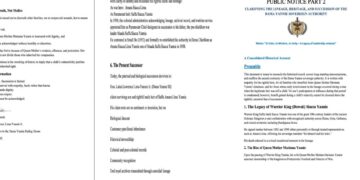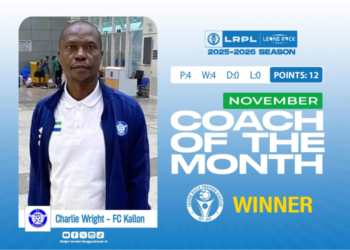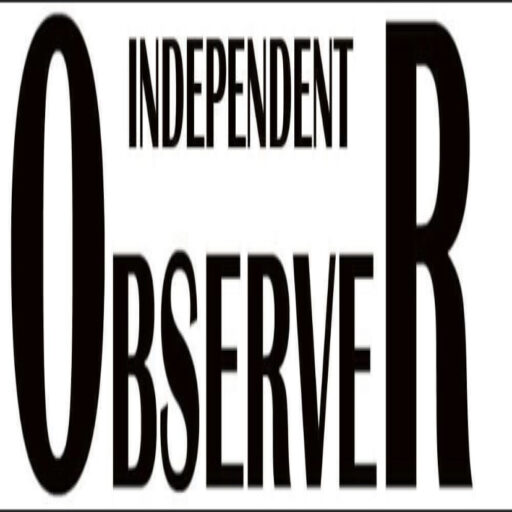By: BANKOLE CLIFFORD EKUNDAYO MORGAN, Human Rights Advocate.
The Maritime Labour Convention, 2006 as amended (MLC, 2006) is widely known as an international labour convention that projects the labour rights of seafarers globally. MLC, 2006 was adopted by the 94th Maritime Session of the International Labour Conference (ILC), on the 23rd day of February, 2006. Essentially, the MLC, 2006 as amended revises and consolidates 37 existing conventions and related recommendations. The MCL, 2006 as amended came to uphold and maintain an international standards for seafarers in the global marine industry. The Convention is otherwise known as the “seafarer’s bill of rights” and was collectively adopted by various governments, employer and workers representatives.
THE UNIQUENESS OF THE MLC, 2006 as amended
The uniqueness of the Convention is that it is aimed at achieving decent working conditions for seafarers and also to secure economic interests through fair competition for quality ship owners. The Convention is said to be comprehensive and sets out, in one place, seafarers’ rights to decent working conditions. It covers almost every aspect of their work and life on board the ship including but not limited to the following:
- minimum age
- seafarers’ employment agreements
- hours of work or rest
- payment of wages
- paid annual leave
- repatriation at the end of contract
- onboard medical care
- the use of licensed private recruitment and placement services
- accommodation, food and catering
- health and safety protection and accident prevention and
- seafarers’ complaint handling
MLC, 2006 IS A KEY COMPLEMENTING LABOUR DOCUMENT OF THE IMO
Essentially, the Convention is considered to be a key complementing labour document of the International Maritime Organization (IMO) that deals with the general safety, security and protection of the marine environment. The Convention was formulated in order to be applied globally and that was why it was formed in a plain English, easy to understand, very readily, and uniformly enforced. It is considered to be the “fourth pillar” of the international regulatory regime for quality shipping.
The importance of the Convention can be classified under two headings: the first as one which brings together, in one place, international minimum standards that ensure decent working conditions and environment for seafarers around the world whose work is essential to international trade as well as to an increasingly important form of tourism and recreational activities globally. As projected under the Convention every seafarer has the following rights:
- a safe and secure workplace that complies with safety standards;
- fair terms of employment;
- decent working and living conditions on board ship;
- health protection, medical care, welfare measures and other forms of social protection
The second classification is based on the fact that the MLC, 2006 as amended helps to create the enabling environment for effective dialogue and collaboration between and among key stakeholders like the government, shipowners and seafarers. It provides a level playing field for quality shipowners operating under the flag of countries that have ratified it. Another goal of this Convention is to ensure that decent working conditions go hand in hand with fair competition. A feature of the Convention is that its proffers a kind of constructive tripartite (seafarers, shipowners and government) engagement and international cooperation in the maritime industry globally. This arrangement creates the platform to address the various seafarers’ challenges.
THE COMPOSITION OF THE MLC, 2006, as amended
The Convention is structured to consist preamble, articles, regulations and codes. These preambles, articles, regulations and codes allow flexibilities for member states to effectively implement the rights and principles of the Convention. They contain the appropriate safeguards and measures to ensure that the rights of seafarers are properly complied with and enforced by member states.
The preamble set the tone for the creation of a single, coherent international instrument exemplifying the standard of living and working conditions of seafarers across the globe. The provisions of the Articles and Regulations of the Convention set out the core rights and principles and the basic obligations of Members States in ratifying it. The Code on the other hand, comprises information about the implementation of the Regulations. This however, comprised of Part A (mandatory Standards) and Part B (non-mandatory Guidelines). The MLC, 2006 as amended is importantly divided into five Titles and each title sets out the related Regulations and Code. Below are outline of the five (5) titles:
Title 1
This title essentially dictates the minimum requirements for seafarers to work on a ship. Title 1 further proffered regulations with respect minimum age, medical certificate, training, qualifications, recruitment and placement.
Title 2
Title 2 extensively project the conditions of employment. The said conditions of employment for seafarers were articulated through regulations. These regulations were formulated in order to project seafarers’ employment agreements, wages, hours of work and hours of rest, entitlement to leave, repatriation, compensation for the ship’s loss or foundering, manning levels, career, skill development and opportunities for seafarers’ employment.
Title 3
The regulations of Title 3 elaborate on seafarer’s accommodation, recreational facilities, food and catering.
Title 4
This Title is basically about seafarers’ health protection, medical care, welfare and social security protection. In articulating this the regulations were specific on the following: medical care on board ship and ashore, shipowners’ liability, health and safety protection and accident prevention, access to shore-based welfare facilities and social security.
Title 5
Title 5 essentially is about state party’s compliance and enforcement mechanism. The regulations under title 5 projected the following: flag state responsibilities, general principles, authorization of recognized organizations, maritime labour certificate and declaration of maritime labour compliance, inspection and enforcement, on-board compliant procedures, marine casualties, port states responsibilities, inspections in port, onshore seafarer complaint-handling procedures and labour-supplying responsibilities.
THE REQUIRED DOCUMENTS WHEN SHIP PROCEEDS ON VOYAGE
Procedurally, when ship proceeds on international voyages, they are usually required to possess among other things two important and specific documents which are:
- Maritime Labour Certificate (MLC) and
- Declaration of Maritime Labour Compliance (DMLC).
Evidentially, these two documents indicate on prima facie evidence that the ships are in compliance with the requirements of the Convention, including areas such as minimum age, seafarers’ employment agreements, hours of work or rest, payment of wages, onboard medical care, the use of licensed, private recruitment and placement services, accommodation, food and catering, health and safety protection and accident prevention. However, these two important documents (MLC and DMLC) are usually subjected to inspection when ships enter the ports of other countries that have ratified the MLC, 2006 as amended.
In sum, the write-up has brought out a brief background of the session through which the MLC, 2006 as amended was adopted, the reviews and total number of consolidations and related recommendations, it uniqueness, and also projected why it is been considered as a key complementing labour document of the IMO. The above further, talked about the composition and the required documents that a ship must possess before plying the territorial sea.


























